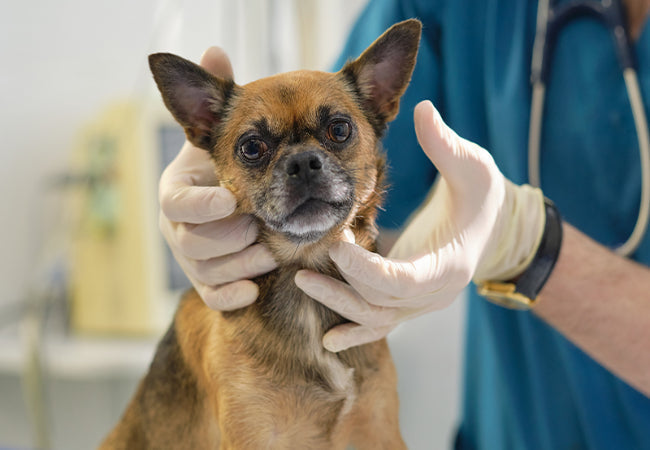Collapsing Trachea in Dogs 2025: Vet-Approved Causes & Treatment 🐶✨

In this article
Collapsing Trachea in Dogs 2025: Vet-Approved Causes & Treatment 🐶✨
By Dr. Duncan Houston BVSc
A collapsing trachea is a condition where the tracheal rings (cartilage) supporting the windpipe weaken, causing the trachea to narrow or collapse during breathing. This condition is most common in small-breed dogs such as Pomeranians, Chihuahuas, and Yorkshire Terriers, though it can occasionally affect other breeds.
🔍 Signs and Symptoms
Dogs with a collapsing trachea may show a range of symptoms. Early recognition can help prevent serious complications. Watch for:
-
Harsh, dry cough – Often sounds like a honking goose. It may worsen with excitement, exercise, or pressure on the trachea (e.g., wearing a collar).
-
Difficulty breathing – Shortness of breath may be noticeable during activity or in warm weather.
-
Wheezing or noisy breathing – A raspy or whistling sound during inhalation or exhalation.
-
Gagging or retching – Especially after coughing episodes.
-
Exercise intolerance – Fatigue or reluctance to play and exercise.
-
Bluish or pale gums (cyanosis) indicate a lack of oxygen and require urgent attention.
-
Syncope (fainting) – In severe cases, due to reduced oxygen flow.
Tip: If your dog exhibits any of these signs, contact your veterinarian promptly for evaluation. Early intervention can significantly improve quality of life.
🩺 Diagnosis
Your veterinarian may use a combination of diagnostic tools to confirm a collapsing trachea:
-
Radiographs (X-rays) – Can show narrowing of the trachea during breathing.
-
Fluoroscopy – A dynamic imaging technique that allows the vet to see the trachea collapse in real-time.
-
Tracheoscopy – Using a small camera to inspect the trachea and assess the severity of collapse visually.
💊 Treatment Options
Treatment depends on the severity of the collapse and your dog’s overall health.
1. Conservative (Non-Surgical) Treatment
For mild to moderate cases, conservative management can help control symptoms:
-
Weight management – Maintaining a healthy weight reduces pressure on the trachea.
-
Cough suppressants and bronchodilators – Help ease breathing and reduce airway irritation.
-
Anti-inflammatory medications – Reduce inflammation in the trachea.
-
Harness instead of a collar – Prevents additional pressure on the windpipe.
-
Nebulizer therapy – Saline or medicated mist can keep airways clear.
Many dogs respond well to these measures and can live comfortably with ongoing management.
2. Surgical Treatment
In severe cases, surgery may be necessary, especially if conservative treatment is ineffective. Surgical options include:
-
Prosthetic tracheal rings – Provide external support to keep the trachea open.
-
Stent placement – A tube inserted into the trachea to maintain airway patency.
The choice of surgery depends on your dog’s condition, the specific area of collapse, and the surgeon’s experience.
🐾 Key Takeaways
-
Collapsing trachea is common in small-breed dogs, but it can affect any dog.
-
Early recognition and veterinary care are crucial for managing the condition.
-
Mild cases may be managed conservatively, while severe cases could require surgery.
-
Using a harness, maintaining a healthy weight, and monitoring for breathing difficulties can help improve your dog’s quality of life.
Always work closely with your veterinarian to determine the best treatment plan for your dog. With proper care, many dogs with a collapsing trachea can live a comfortable and active life.



